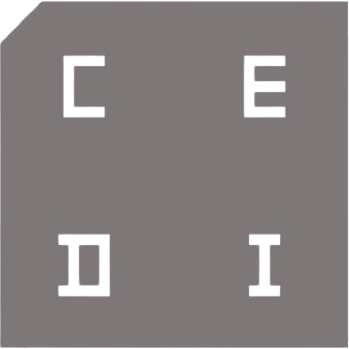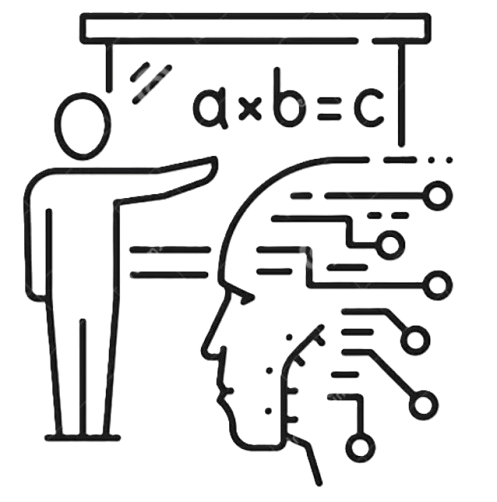* Download the BNAIC2024 program PDF file from here.
| Time\ Location | Progress | Expedition | Quest | TransitZone |
|---|---|---|---|---|
| 08:45 – 09:15 | Welcome & Registration | |||
| 09:15 – 09:30 | Opening | |||
| 09:30 – 10:30 | Invited Talk-Daniel Oberski | |||
| 10:30 – 11:15 | Posters session 1 & Coffee | |||
| 11:15 – 12:00 | Knowledge Representation and Reasoning | ORTEC | Fairness in AI | |
| 12:00 – 13:00 | BNVKI general assembly | Lunch | ||
| 13:00 – 14:30 | Deep Learning | Impact EWUU Alliance 1 | Reinforcement Learning | |
| 14:30 – 15:15 | Posters session 2 & Demos & Coffee | |||
| 15:15 – 16:30 | Knowledge Representation and Reasoning | Impact EWUU Alliance 2 | Reinforcement Learning | |
| 16:45 – 17:45 | Interactive AI | Natural Language Processing | Reinforcement Learning | |
| 17:45 – 19:00 | Reception | |||
| 18:00 – 20:00 | PI / Faculty session |
Sessions
| Session chair: Mehdi Dastani | 11:15-12:00 |
| Nima Motamed, Natasha Alechina, Mehdi Dastani, Dragan Doder | Revising Beliefs and Intentions in Stochastic Environments |
| Lucas Van Laer, Simon Vandevelde, and Joost Vennekens | Efficiently grounding FOL using bit vectors |
| Christian Alrabbaa, Stefan Borgwardt, Tom Friese, Anke Hirsch, Nina Knieriemen, Patrick Koopmann, Alisa Kovtunova, Antonio Krüger, Alexej Popovič, Ida Siahaan | Explaining Reasoning Results for OWL Ontologies with EVEE |
| Session chair: Patrick Koopmann | 15:15 – 16:15 |
| Manuel Quesada, Leonardo Concepción, Koen Vanhoof | Backpropagation in Fuzzy Cognitive Map Model applied on classification problems |
| Issa Hanou, Devin Wild Thomas, Wheeler Ruml, Mathijs de Weerdt | Replanning in Advance for Instant Delay Recovery in Multi-Agent Applications: Rerouting Trains in a Railway Hub |
| Wijnand van Woerkom, Davide Grossi, Henry Prakken, Bart Verheij | A Fortiori Case-Based Reasoning: From Theory to Data |
| Jieying Chen, Hang Dong, Jiaoyan Chen, Ian Horrocks | Ontology Text Alignment: Aligning Textual Content to Terminological Axioms |
| Session chair: moderators | 11:15-12:00 |
| Joaquim Gromicho, Analytics for a Better World Institute | You may know that the United Nations World Food Programme won the Nobel Peace Prize in 2020 for its efforts toward achieving zero hunger. You may also be aware that the Zero Hunger Lab, closely associated with the Analytics for a Better World Institute, won the Franz Edelman Award in 2021 for its remarkable optimization work with the World Food Programme, aligned with the United Nations’ Sustainable Development Goal number 2: Zero Hunger. Today, I will share equally impressive examples of how optimization is contributing to improved access to healthcare worldwide, supporting the United Nations’ Sustainable Development Goal number 3: Good Health and Well-being. I will present case studies from Timor-Leste, Vietnam, Nepal, and Kenya, highlighting projects carried out by the Analytics for a Better World Institute in collaboration with the World Bank, the World Health Organization, AMREF, and others.
|
| Session chair: Emma Beauxis-Aussalet | 11:15-12:00 |
| Colette Wibaut, Marie Beth van Egmond, Vincent Dunning | Challenges in Algorithmic Fairness when using Multi-Party Computation Models |
| Tibé Iritie, Daphne Lenders | From Laws to Algorithms: Detecting Unfairness in Machine Learning Models |
| Nisse Degelin, Pieter Delobelle, Kristen Scott, Bettina Berendt | High stakes for LLMs: Analysis of Bias in BERT-based Recommender Systems |
| Session chair: Roxana Radulescu | 13:00-14:30 |
| Aki Härmä, Marcin Pietrasik, Anna Wilbik | Empirical Capacity Model for Self-Attention Neural Networks |
| Leonardo Concepción, Marilyn Bello, Gonzalo Nápoles, Rafael Bello, Pablo Mesejo, Óscar Cordón | REPROT: Explaining the Predictions of Complex Deep Learning Architectures for Object Detection Through Reducts of an Image |
| Yingfu Xu, Kevin Shidqi, Gert-Jan van Schaik, Refik Bilgic, Alexandra Dobrita, Shenqi Wang, Roy Meijer, Prithvish Nembhani, Cina Arjmand, Pietro Martinello, Anteneh Gebregiorgis, Said Hamdioui, Paul Detterer, Stefano Traferro, Mario Konijnenburg, Kanishkan Vadivel, Manolis Sifalakis, Guangzhi Tang and Amirreza Yousefzadeh | Optimizing Event-Based Neural Networks on Digital Neuromorphic Architecture: A Comprehensive Design Space Exploration |
| Berfu Karaca, Albert Ali Salah, Jaap Denissen, Ronald Poppe, Sonja de Zwarte | Survey of Automated Methods for Nonverbal Behavior Analysis in Parent-Child Interactions |
| Andrea Cavallo, Mohammad Sabbagh, Elvin Isufi | Spatiotemporal Covariance Neural Networks |
| Jonathan Salzer, Arnoud Visser | Bringing the RT-1-X Foundation Model to a SCARA robot |
| Impact EWUU Alliance 1 | |
|---|---|
| Session chair: moderators | 13:00-14:30 |
| Guido Camps | Introduction to the session |
| Jaap Trappenburg | Introduction to the session theme |
| Sjaak Brinkkemper, Joep Wegstapel | The administrative burden of routine processes in professional communication is high, yet client consultation reports are essential. To address this challenge, we launched the Care2Report research program (www.care2report.nl), which aims to enable generative reporting through multimodal recording (audio, video, Bluetooth) of consultations. This process is followed by knowledge representation, ontological interpretation of conversations, and the automatic generation and uploading of reports into clients’ files. Advances in generative AI (such as ChatGPT, Gemini, and Llama) offer novel tools for conversation interpretation and summarization, enhancing the potential of this approach.
This presentation will cover the objectives of the Care2Report research program, its linguistic pipelines, the current functional and technical architecture, and a live demonstration. Specifically, we will showcase (i) the creation of an ontology to align with conversation audio transcripts, (ii) advancements in prompt engineering, and (iii) an action recognition model using convolutional neural networks. We will conclude with an outlook on ongoing research projects and experimental applications in healthcare, law enforcement, and municipal government. |
| Amir Sadeghi, Mike de Boer | By utilizing artificial intelligence (AI) for advanced imaging analysis and virtual reality or augmented reality (AR) for surgical visualization, the team aims to improve surgical precision and patient safety. The academic hospital provides clinical expertise and patient data, while the medtech startup delivers technological innovations. This collaboration accelerates the development of customized 3D planning software and intraoperative AR tools, which provide real-time support to surgical teams and make operations more efficient.
|
| Amir Sadeghi, Chris Hordijk | Demo of robotic-assisted thoracic surgery |
| Impact EWUU Alliance 2 | |
|---|---|
| Session chair: moderators | 15:15-16:30 |
| Duco Veen, Tim Christen | In this talk we explore the dynamic interplay between real-world application and research on AI-methods. We look ASReview’s role in evidence synthesis for medical guideline creation, the impact of partner collaboration on academic inquiry, and practical challenges in implementation. We’ll discuss how outreach shapes ASReview’s evolution, turning practical insights into research inspiration to enhance its functionality and real-life impact.
|
| Martine Breteler | Researchers from UMCU and TU/e are advancing remote patient monitoring (RPM) by integrating AI to make wearables more context-aware. The goal is to develop “smart alerts” that reduce false positives by identifying when a patient genuinely requires attention, thus lightening the workload for healthcare providers. These wearables collect health data, such as heart rate and blood pressure, allowing patients to recover at home while healthcare staff monitor for early signs of deterioration. The team is also refining prompt timing for patient responses and is planning a “Living Lab for Remote Monitoring” in 2025, where they can test and improve RPM workflows in a simulated environment. This initiative, part of the EWUU Alliance, combines clinical expertise from UMCU with TU/e’s technical knowledge, aiming for practical, sustainable improvements in healthcare workflows.
|
| Guido Camps | Nutrition as well as nutritional epidemiology is heavily dependent on accurate measurement intake. The current golden standard is based on questionnaires and manual recording, which are both prone to bias as well as error. AI in combination with sensors could partly mitigate this issue. In this talk we will look at state of the art solutions partly developed within the EWUU framework.
|
 Interactive AI Interactive AI | |
|---|---|
| Session chair: Thiago D. Simao | 16:45-17:45 |
| Delaram Javdani Rikhtehgar, Ilaria Tiddi, Shenghui Wang, Stefan Schlobach, Dirk Heylen | Assessing the HI-ness of Virtual Heritage Applications with Knowledge Engineering |
| Mohammed Al Owayyed, Myrthe Tielman, Arno Hartholt, Marcus Specht, Willem-Paul Brinkman | An Encore Abstract: Agent-based Social Skills Training Systems: The ARTES Architecture |
| Francesco Barile, Federico Cau, Nava Tintarev | A Preliminary Analysis on Self and Peer Evaluation of Personality Models for Recommender Systems |
| * Erik van Haeringen, Charlotte Gerritsen * Erik van Haeringen, Emmeke Veltmeijer, Charlotte Gerritsen | * Emotion Contagion in Avatar-Mediated Group Interactions * Empirical Validation of an Agent-Based Model of Emotion Contagion |
| Session chair: Katrien Beuls | 16:45-17:45 |
| Joanna Budzik | The Smoking Gun: Unveiling GPT-4’s memorisation of Polish Texts and Implications for Copyright Infringement |
| Dumitru Versebeniuc, Martijn Elands, Sara Falahatkar, Chiara Magrone, Mohammad Falah, Martijn Bousse and Aki Harma | Generative AI-based Virtual Assistant using Retrieval-Augmented Generation: An evaluation study for bachelor projects |
| Modhurita Mitra, Martine de Vos, Nicola Cortinovis, Dawa Ometto | Generative AI for Research Data Processing: Lessons Learnt from Three Use Cases |
| Jeongwoo Park, Enrico Liscio, Pradeep Murukannaiah | Morality is Non-Binary: Building a Pluralist Moral Sentence Embedding Space using Contrastive Learning |
| PI / Faculty session | |
|---|---|
| Session theme: Funding | 18:00-19:00 |
| Marieke van Duin | NWO and WEAVE |
| Wout Lamers | EU funding (RVO) |
| Moderators | Structured Discussion |
| Session theme: BeNeLux AI community | 19:00 – 20:00 |
| Mehdi Dastani | SIGAI |
| Tom Lenaerts | BNVKI |
| Moderators | Structured Discussion |
Posters & Demos
| Demos | |
|---|---|
| 14:30-15:15 | |
| Benjamin Callewaert, Joost Vennekens | ChatIDP: An Interactive Chatbot for IDP Knowledge Bases |
| Clinton Cao, Simon Schneider, Nicolás Diaz-Ferreyra, Annibale Panichella, Sicco Verwer, Riccardo Scandariato | CATMA: Conformance Analysis Tool for Microservice Applications |
Invited Talk
![]() Progress – 9:30-10:30
Progress – 9:30-10:30 ![]()
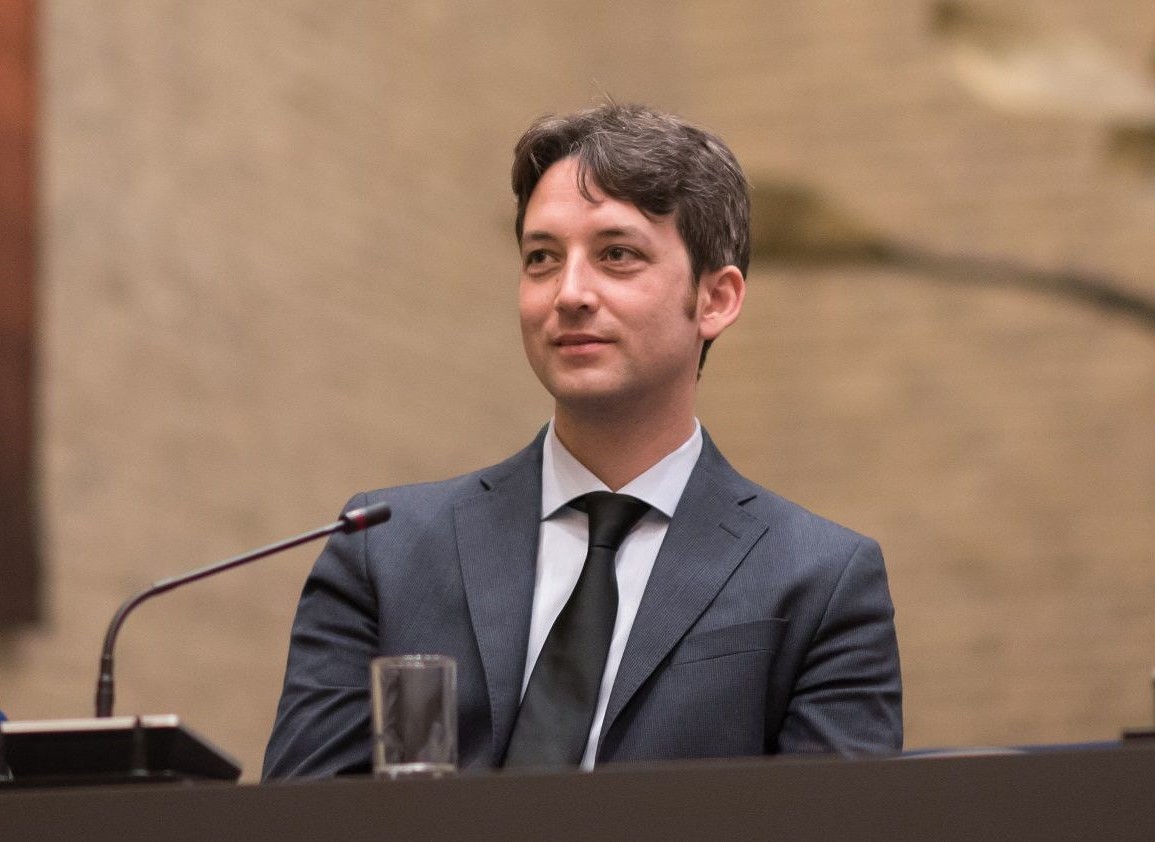 Daniel Oberski Short bio Daniel Oberski has a background in statistics, mathematics, and social science, and develops new models and new data collection methods that solve problems in applied fields, including but not limited to health care, economics, innovation studies, sociology, political science, psychology, ecology, and computer science. Read more |
| Time\ Location | Progress | Expedition | Quest | TransitZone |
|---|---|---|---|---|
| 09:00 – 10:00 | EurAI session | |||
| 10:00 – 10:45 | Posters session 3 & Coffee | |||
| 10:45 – 12:00 | Natural Language Processing | Deep Learning | Transfer and online learning | |
| 12:00 – 13:00 | KION lunch meeting | Lunch | ||
| 13:00 – 14:30 | Evolutionary Computing | Impact ICAI | Reinforcement Learning | |
| 14:30 – 15:15 | Posters session 4 & Demos & Coffee | |||
| 15:15 – 16:30 | Machine Learning Classification and Time Series | Knowledge Representation and Reasoning | Data and pattern mining | |
| 16:45 – 17:45 | FACT session | |||
| 18:00 – 20:00 | Dinner |
Sessions
| Session chair: Jieying Chen | 10:45-12:00 |
| Qixiang Fang, Daniel Oberski, Dong Nguyen | PATCH! Psychometrics-AssisTed benChmarking of Large Language Models: A Case Study of Proficiency in 8th Grade Mathematics |
| Thales Bertaglia, Lily Heising, Rishabh Kaushal, Adriana Iamnitchi | InstaSynth: Opportunities and Challenges in Generating Synthetic Instagram Data with chatGPT for Sponsored Content Detection |
| Qixiang Fang, Anastasia Giachanou, Ayoub Bagheri | Improving Stance Detection by Leveraging Measurement Knowledge from Social Sciences: A Case Study of Dutch Political Tweets and Traditional Gender Role Division |
| Jamie Wright | Examining Iconicity Information in Semantic and Phonetic Word Embeddings |
| Alexander G. Padula, Dennis J.N.J. Soemers | Exploring RL-based LLM Training for Formal Language Tasks with Programmed Rewards |
| Session chair: Lynn Houthuys | 10:45-12:00 |
| Aniek Eijpe, Valentina Corbetta, Kalina Chupetlovska, Regina Beets-Tan, Wilson Silva | Enhancing Cross-Modal Medical Image Segmentation through Compositionality |
| Natasha T.J. van den Berg, Bram O. Broekgaarden, Dionysia P.A. Mahieu, Jolijn G.M.J. Martens, Jonas M.Niederle, Rianne Schouten and Wouter Duivesteijn | Generating MNAR Missingness in Image Data, with Additional Evaluation of MisGAN |
| Stig Hellemans, Andres Algaba, Vincent Ginis | Flexible Counterfactual Explanations with Generative Models |
| Francesca Marogna, Martijn van Leeuwen, Fabian Hoitsma, Gorkem Saygili, Sharon Ong | Generating Artificial PET Scans from Low Dose CT Scans with an Adapted Dual Diffusion Implicit Bridges (DDIBs) Model |
| Pierre Gabriel Bibal Sobeaux | Improving Perception Metrics in Image Denoising by Using a Diffusion-Like Process atop a UNet Model |
| Session chair: Arnoud Visser | 10:45-11:30 |
| Dennis J.N.J. Soemers, Vegard Mella, Éric Piette, Matthew Stephenson, Cameron Browne, Olivier Teytaud | Towards a General Transfer Approach for Policy-Value Networks |
| Mandani Ntekouli, Gerasimos Spanakis, Lourens Waldorp, Anne Roefs | Enhanced Boosting-Based Transfer Learning for Modeling Ecological Momentary Assessment Data |
| Kim van den Houten, David Tax, Esteban Freydell, Mathijs de Weerdt | Learning from Scenarios for Repairable Stochastic Scheduling |
| Session chair: Dirk Thierens | 13:00-14:30 |
| Jippe Hoogeveen, Marjan van den Akker, Han Hoogeveen | Solving the Casting problem using Column Generation; better results with 100 variables instead of 1 billion |
| Benoît Alcaraz, Aleks Knoks, David Streit | Estimating Weights of Reasons Using Metaheuristics: A Hybrid Approach to Machine Ethics |
| Tobias Deinböck, Chu-Hsuan Hsueh, Kokolo Ikeda | Procedurally Generating Natural-Looking Villages in Minecraft with Ant Colony Optimization Algorithms |
| Amaury Guichard, Quentin Cappart | Learning Crossover Operators in Genetic Algorithms: Application to the Capacitated Vehicle Routing Problem |
| Roel Brouwer, Marjan van den Akker, Han Hoogeveen | A Hybrid Local Search Algorithm for the Continuous Energy-Constrained Scheduling Problem |
| Impact ICAI | |
|---|---|
| Session chair: moderators | 13:00-14:30 |
| Siddique Sheikh | Introduction to the session |
| Kim van den Houten | The Flow Must Go On: Handling Uncertainties in Biomanufacturing Scheduling |
| Jinke Oostvogel | Getting the priorities straight: A qualitative case study of the values driving AI adoption in healthcare |
| Alireza Samadifardheris | Deep Learning for Resolution Enhancement of Quantitative MR Maps Using High-Resolution Weighted Images |
| Talha Özüdoğru | AI as a Fragile Ally: Exploring Human-AI Collaboration |
| Erkan Basar | To What Extent Are LLMs Capable of Generating Substantial Reflections for Motivational Interviewing Counselling Chatbots? A Human Evaluation |
| Roos Scheffers | Related Explanations in Formal Argumentation, an Empirical Study |
| Siddique Sheikh | AI trustworthiness |
| Siddique Sheikh | Closing Remarks |
| Session chair: Shihan Wang | 13:00-14:30 |
| Yaren Aslan, Stephan Bongers, Frans Oliehoek | Mitigating double-dipping in behavior-agnostic RL |
| Brieuc Pinon, Jean-Charles Delvenne, and Raphaël Jungers | Counterexamples to RL approaches blending search and learning for problem-solving |
| Mathieu Reymond, Conor F. Hayes, Lander Willem, Roxana Radulescu, Steven Abrams, Diederik M. Roijers, Enda Howley, Patrick Mannion, Niel Hens, Ann Nowe, Pieter Libin | Exploring the Pareto Front of Multi-Objective COVID-19 Mitigation Policies Using Reinforcement Learning |
| Vincenzo Lipardi, Xenofon Chiotopoulos, Jacco A. de Vries, Domenica Dibenedetto, Kurt Driessens, Marcel Merk, Mark H.M. Winands | Variational Quantum Algorithms for Particle Track Reconstruction |
| Tom Pepels, Mark Winands | Ancestor-Based α-β Bounds for Monte-Carlo Tree Search |
| Wietze Koops | A* Algorithms for Dec-POMDPs |
| Session chair: Sharon Ong | 15:15-16:30 |
| Stijn Rotman, Boris Cule, Len Feremans | Efficiently Mining Frequent Representative Motifs in Large Collections of Time Series |
| Mehran Moazeni, Sebastian Mildiner Moraga, Maaike Wösten, Linda W. van Laake, Folkert W. Asselbergs, Emmeke Aarts | Real-time prediction of Atrial Fibrillation using Meta-learning |
| Frank Klingert | Feature engineering for classification: A bibliometric literature review |
| Felipe Kenji Nakano, Karolijn Dulfer, Ilse Vanhorebeek, Pieter J. Wouters, Sascha Verbruggen, Koen Joosten, Fabian Grandas, Celine Vens, and Greet Van den Berghe | Predicting adverse long-term neurocognitive outcomes after pediatric intensive care unit hospitalization |
| Benoît Loucheur, P.-A. Absil, Michel Journée | Weather Data Imputation Using Graph-Based Low-Rank Matrix Completion with Variable Projection |
| Session chair: Neil Yorke-Smith | 15:15-16:15 |
| Ward Gauderis, Geraint Wiggins | Quantum Theory in Knowledge Representation: A Novel Approach to Reasoning with a Quantum Model of Concepts |
| Daimy Van Caudenberg, Bart Bogaerts, Leandro Vendramin, Samuele Pollaci | SAT-Based Enumeration Of Solutions To The Yang-Baxter Equation |
| Bram Swaanen, and Tomas Klos | What To Do Next? A Comparative Study of Human and Rational Decision-Making |
| Zhivar Sourati, Filip Ilievski, Pia Sommerauer, Yifan Jiang | ARN: Analogical Reasoning on Narratives |
| Session chair: Ad Feelders | 15:15-16:15 |
| Rianne M. Schouten, Gonneke W.J.M. Stevens, Saskia A.F.M. van Dorsselaer, Elisa L. Duinhof, Karin Monshouwer, Mykola Pecheniziky and Wouter Duivesteijn | Analyzing the interplay between societal trends and socio-demographic variables with local pattern mining: Discovering exceptional trends in adolescent alcohol use in the Netherlands |
| Oliver Urs Lenz, Daniel Peralta, Chris Cornelis | Polar Encoding: A Simple Baseline Approach for Classification with Missing Values |
| Jacobus G.M. van der Linden, Mathijs de Weerdt, Emir Demirović | Necessary and Sufficient Conditions for Optimal Decision Trees using Dynamic Programming |
| Hugo Santos, Catarina Ramos, Marta Faias, Nuno C. Marques | Optimizing the Magic Formula in Europe: Factors Driving Return, Risk and Risk-Adjusted Return |
| FACT session | |
|---|---|
| Session chair: moderators | 16:45-17:45 |
| Pinar Yolum Birbil | Artificial Intelligence, powered by artificial neural networks, is proving to be both a blessing and a burden. Sparse training has emerged as a promising solution to mitigate the significant energy demands of modern deep learning techniques while enhancing generalization in many cases. However, most mainstream hardware and software libraries remain optimized for dense neural networks, making the development of truly sparse solutions a distant goal. Achieving this would theoretically reduce the energy consumption of deep learning by orders of magnitude, paving the way for a more sustainable AI landscape. Yet, many challenges remain. So, what steps should we take to bring this vision closer to reality?
|
| Decebal Constantin Mocanu | Artificial Intelligence, powered by artificial neural networks, is proving to be both a blessing and a burden. Sparse training has emerged as a promising solution to mitigate the significant energy demands of modern deep learning techniques while enhancing generalization in many cases. However, most mainstream hardware and software libraries remain optimized for dense neural networks, making the development of truly sparse solutions a distant goal. Achieving this would theoretically reduce the energy consumption of deep learning by orders of magnitude, paving the way for a more sustainable AI landscape. Yet, many challenges remain. So, what steps should we take to bring this vision closer to reality?
|
| Giovanni Sileno | Contemporary debates concerning artificial systems and their relationship with humans just keep increasing. Unfortunately, various misunderstanding are occurring between humanities- and computational- oriented perspectives, and between different positions within. Can machine be likehumans? Can they never be like humans? Are machines just like hammers? Can they become terminators? In this talk I will decompose these questions sketching a conceptual framework, elaborating on notions as moral agency and patiency to identify key components that may conduct to a weaker form of agency, offering a moreneutral grounds to discuss responsibility, accountability, and liability.
|
Posters & Demos
| Demos | |
|---|---|
| 14:30-15:15 | |
| Ruud Hortensius, Giulia D’Angelo, Ayoub Bagheri, Dong Nguyen, Rianne Dekker, Lisandra Costiner and Karin Jongsma | AI Helpdesk – a platform for reliable answers to questions from the general public about AI |
Invited Talk
![]() Progress – 9:00-10:00
Progress – 9:00-10:00 ![]()
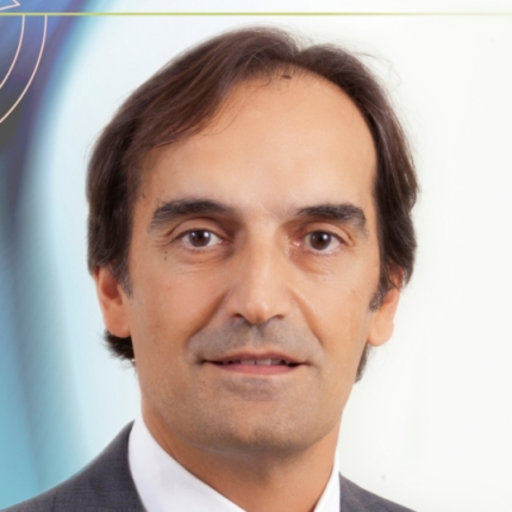 Luis Magdalena CAEPIA representative Vice President of the Spanish Society for Artificial Intelligence (AEPIA) |
 Karl Thurnhofer Hemsi PhD Awardee 2023 (EVIA Award) short bio Karl Thurnhofer-Hemsi currently works at the Department of Computer Sciences and Languages, University of Malaga. Karl does research in Medical Image Processing and Deep Neural Networks. |
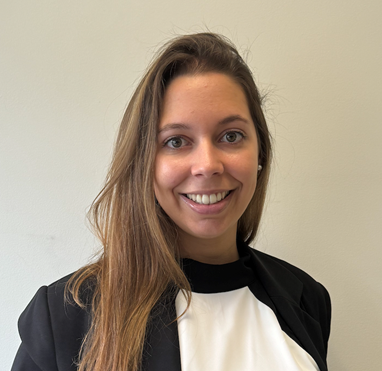 Verónica Álvarez PhD Awardee 2024 (Frances Allen Award) Short bio Verónica is at the Basque Center for Applied Mathematics-BCAM since July 2019 where she is developing data science techniques for energy applications. She wins the Frances Allen Award from the Spanish Association for Artificial Intelligence for her Doctoral Thesis. |
| Time\ Location | Progress | Expedition | Quest | TransitZone |
|---|---|---|---|---|
| 09:00 – 10:00 | Invited talk-Nuria Oliver | |||
| 10:00 – 10:30 | Coffee | |||
| 10:30 – 12:00 | Natural Language Processing | Data and pattern mining | Knowledge Representation and Reasoning | |
| 12:00 – 12:30 | Awards & Closing |
Sessions
| Session chair: Anastasia Giachanou | 10:30-11:30 |
| Ruben Cartuyvels, Wolf Nuyts, Marie-Francine Moens | Explicitly Representing Syntax Improves Sentence-to-Layout Prediction of Unexpected Situations |
| Fabio De Ponte | Grounding Words in Visual Perceptions: Experiments in Spoken Language Acquisition |
| Max van Duijn, Bram van Dijk, Tom Kouwenhoven, Werner de Valk, Marco Spruit, Peter van der Putten | Theory of Mind in Large Language Models: Examining Performance of 11 State-of-the-Art models vs. Children Aged 7-10 on Advanced Tests |
| Cascha van Wanrooij, Omendra Manhar, Jie Yang | Topic Modeling for Small Data using Generative LLMs |
| Session chair: | 10:30-12:00 |
| Maarten Al Sadawi, Ad Feelders | Monotone Oblique Decision Trees |
| Tom McDonald, Calvin Tsay, Artur M. Schweidtmann, Neil Yorke-Smith | Mixed-Integer Optimisation of Graph Neural Networks for Computer-Aided Molecular Design (Article Abstract) |
| Isel Grau, Gonzalo Nápoles | Sparseness-Optimized Feature Importance |
| Oliver Urs Lenz, and Matthijs van Leeuwen | Directional anomaly detection |
| Noah Schutte, Krzysztof Postek, Neil Yorke-Smith | Robust Losses for Decision-Focused Learning |
| Pedro Ilídio, Ricardo Cerri, Celine Vens, Felipe Kenji Nakano | Deep forests with tree-embeddings and label imputation for weak-label learning |
| Session chair: Natasha Alechina | 10:30-11:45 |
| Yehor Kozyr, Weam Aridi, Neil Yorke-Smith | An Efficient Decremental Algorithm for Simple Temporal Networks |
| Johan Kwisthout | Subjective and temporal quality-of-life information in Bayesian networks |
| Veerle E. van den Hurk, Egon L. van den Broek, Marjan van den Akker, Erwin Abbink | Template and constraint-based models for the optimization of schedules, applied to Netherlands Railways (NS)’ crew planning |
| Konstantin Sidorov, Gonçalo Correia, Mathijs De Weerdt, Emir Demirović | Paths, Proofs, and Perfection: Developing a Human-Interpretable Proof System for Constrained Shortest Paths |
| Marcin Pietrasik, Marek Reformat, Anna Wilbik | Non-Parametric Path Based Model for Taxonomy Induction in Knowledge Graphs |
Invited Talk
![]() Progress – 9:00-10:00
Progress – 9:00-10:00 ![]()
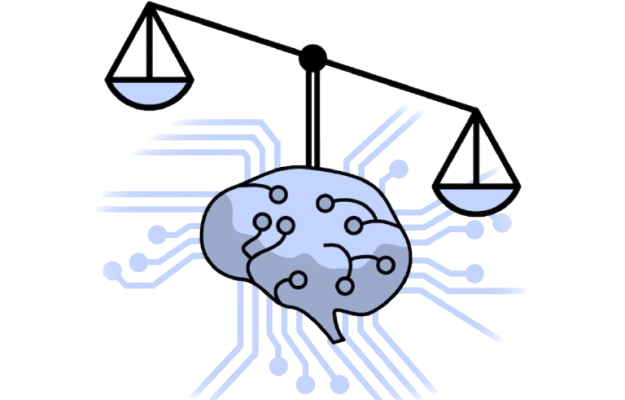 Towards a fairer world — Uncovering and addressing human and algorithmic biases Towards a fairer world — Uncovering and addressing human and algorithmic biases |
| In my talk, I will first briefly present ELLIS Alicante, the only ELLIS unit that has been created from scratch as a non-profit research foundation devoted to AI for Social Good. Next, I will present a few examples of our work on uncovering and mitigating both human and algorithmic biases with AI. On the human front, I will present the work that we have carried out to study the attractiveness halo effect in the era of AI-based beauty filters, which will be published shortly in the Royal Society Open Science Journal1, and the research that we have done about the biases of the beauty filters that are so popular on social media2,3. On the algorithmic front, I will present FairShap, a novel pre-processing approach for algorithmic fairness based on Shapley Values4 and recent work on measuring structural unfairness in social networks5 and on uncovering the disparate impact of Deep Ensembles6. |
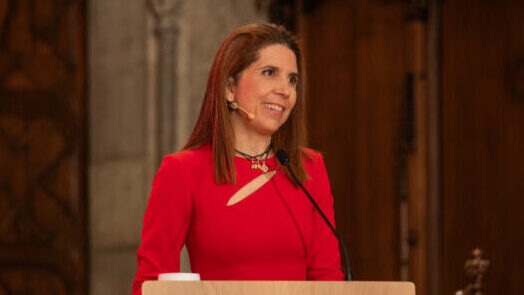 Nuria Oliver Short bio Nuria Oliver, Scientific Director and co-founder of ELLIS Alicante, and vice-president of ELLIS, will present on “Human-Centered AI.” With a Ph.D. from the Media Lab at MIT, Nuria is the first female computer scientist in Spain to be named an ACM Distinguished Scientist and ACM Fellow. Read more |


